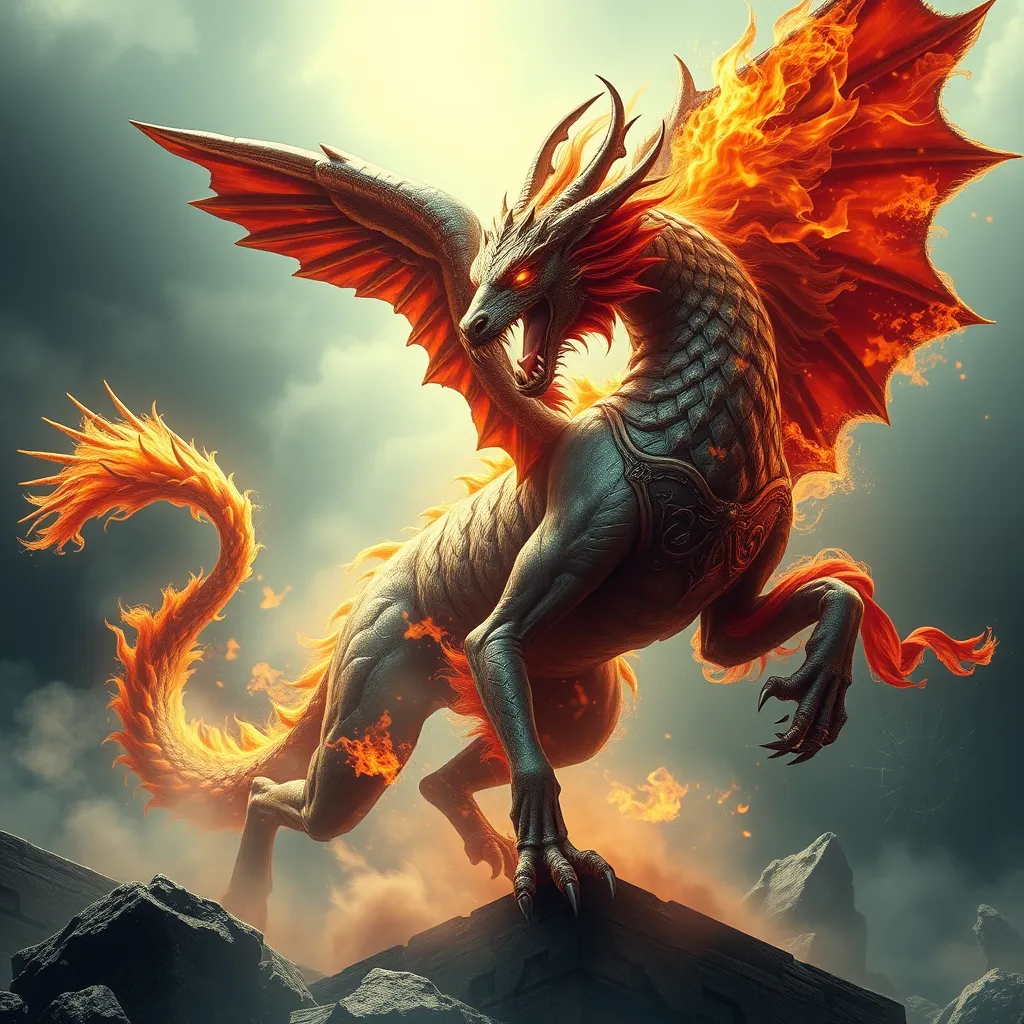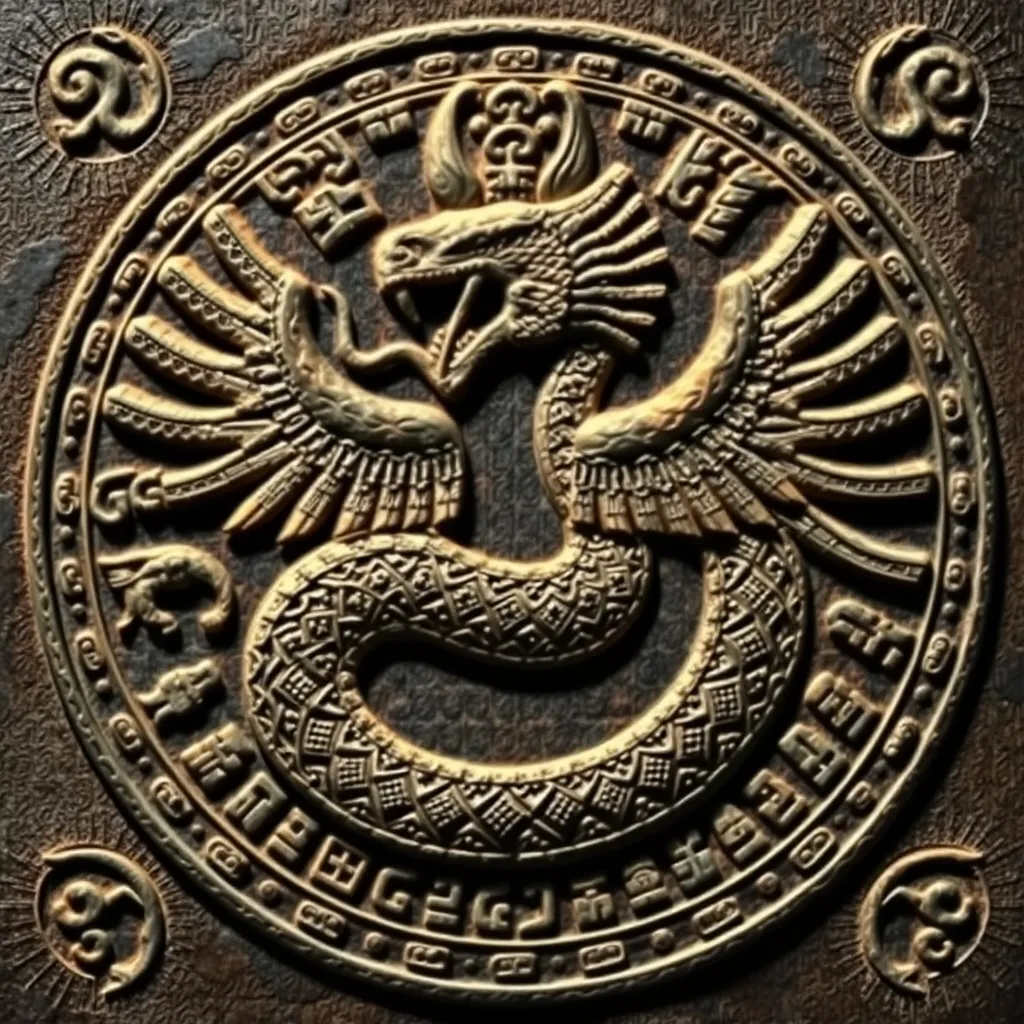The Roman Chimera: A Fusion of Greek Myth and Roman Influence
I. Introduction
The Chimera is a fascinating creature from mythology, often described as a monstrous hybrid that embodies different animal characteristics. Traditionally depicted with the body of a lion, the head of a goat emerging from its back, and a tail that ends in a serpent, the Chimera represents chaos and the blending of various forms. This creature plays a significant role in Greek mythology, where it symbolizes the struggles between man and the beast, as well as the challenges faced by heroes.
In both Greek and Roman cultures, the Chimera holds substantial significance. In Greek mythology, it is primarily linked to the heroic deeds of Bellerophon, who ultimately defeated the creature. The Romans, who adopted many aspects of Greek culture, reinterpreted the Chimera, embedding it into their own mythological narratives and artistic expressions.
This article aims to explore the fusion of these mythologies, focusing on the origins of the Chimera in Greek mythology and its adaptation in Roman culture, alongside its artistic representations, literary mentions, and legacy in Roman society.
II. The Origins of the Chimera in Greek Mythology
A. Description of the Chimera: Physical characteristics and abilities
The Chimera is often described as a fearsome beast that possesses a combination of features from multiple animals. Its most common representation includes:
- Body of a lion
- Head of a goat on its back
- Tail that ends in a serpent’s head
This amalgamation of traits not only makes the Chimera a symbol of chaos but also showcases its formidable abilities, such as breathing fire and instilling fear in those who encounter it.
B. The mythological story of the Chimera: Key figures involved (e.g., Bellerophon)
In Greek mythology, the Chimera is primarily known through the story of Bellerophon, a hero who, with the help of the winged horse Pegasus, sets out to defeat the beast. The myth details Bellerophon’s arduous journey, where he demonstrates bravery and skill in overcoming a creature that was thought to be invincible. This story not only highlights the hero’s journey but also emphasizes themes of courage, skill, and the human struggle against overwhelming odds.
C. Symbolism and themes in Greek mythology associated with the Chimera
The Chimera symbolizes various themes in Greek mythology, including:
- The struggle between civilization and chaos
- The confrontation of fearsome challenges
- The fusion of different elements representing unpredictability
These themes resonate throughout various myths, showcasing how the Chimera serves as an allegory for personal and societal conflicts.
III. The Roman Adaptation of the Chimera
A. How the Romans adopted Greek myths and deities
The Romans were known for their ability to adapt and integrate Greek culture into their own. The Chimera was one of the many elements that the Romans reinterpreted, often blending it with their own mythological narratives. This adoption was not merely superficial; it involved a transformation of the Chimera’s role within the context of Roman values and beliefs.
B. Changes in the representation of the Chimera in Roman art and literature
In Roman art, the Chimera was often depicted with more emphasis on its fearsome aspects, showcasing its monstrous traits in sculptures and mosaics. The Romans tended to highlight the creature’s chaotic nature, which reflected their own societal concerns about order and control.
C. The role of the Chimera in Roman culture and religion
In Roman culture, the Chimera was not just a mythological figure; it also served as a symbol in religious practices and rituals. The creature was sometimes associated with the idea of divine retribution, representing the consequences of hubris and moral failings.
IV. Artistic Representations of the Chimera
A. Examination of famous artworks featuring the Chimera
Throughout history, the Chimera has been a popular subject in various art forms. Notable artworks include:
- The “Chimera of Arezzo,” a bronze statue from the 4th century BCE
- Various Roman mosaics depicting the Chimera in dynamic poses
- Renaissance artworks that reimagined the Chimera in new contexts
B. Differences between Greek and Roman artistic interpretations
While Greek representations of the Chimera often focused on its mythical narratives, Roman art typically emphasized its fearsome nature and the chaos it embodied. The Romans portrayed the Chimera as a formidable adversary, often in more dramatic and exaggerated forms than their Greek counterparts.
C. The impact of the Chimera on Roman sculpture and mosaics
The Chimera’s distinctive features made it a compelling subject for Roman sculptors and mosaic artists. Its imagery often served as a warning or a reminder of the dangers of chaos, influencing the design of public spaces and private homes alike.
V. The Chimera in Roman Literature
A. References to the Chimera in Roman poetry and prose
The Chimera appears in various works of Roman literature, often as a metaphor for danger or a formidable opponent. Authors such as Virgil and Ovid referenced the creature in their writings, depicting it in ways that resonated with their audiences.
B. Notable authors and their portrayals of the Chimera (e.g., Virgil, Ovid)
Virgil, in his epic poem “The Aeneid,” utilized the Chimera as a symbol of chaos, reflecting the tumultuous nature of war and the struggles of the characters. Ovid, on the other hand, explored the Chimera in his “Metamorphoses,” focusing on the themes of transformation and the hybrid nature of the creature.
C. The Chimera as a metaphor in Roman literary works
In Roman literature, the Chimera often serves as a metaphor for the unpredictable and chaotic forces of nature and human experience, reflecting the anxieties of Roman society regarding order and stability.
VI. The Chimera’s Legacy in Roman Society
A. The Chimera’s influence on Roman military and heraldry
The Chimera’s fearsome image made it a popular symbol in Roman military insignia and heraldry. Its representation on banners and shields served to instill fear in enemies and represent the might of the Roman legions.
B. The creature’s presence in Roman games and entertainment
The Chimera also found its way into Roman games and entertainment, often appearing in gladiatorial contests and theatrical performances. Its terrifying nature served to captivate audiences and heighten the dramatic tension of the events.
C. How the Chimera reflects Roman values and beliefs
The Chimera embodies key Roman values such as strength, bravery, and the constant struggle against chaos. Its presence in various aspects of Roman life highlights the society’s preoccupation with control and the heroic ideal.
VII. Comparative Analysis: Greek vs. Roman Perspectives
A. Key differences in the understanding of the Chimera between cultures
While the Greeks viewed the Chimera primarily as a monstrous foe to be vanquished, the Romans incorporated it into a broader cultural and moral framework, emphasizing its role as a symbol of chaos and divine retribution.
B. The evolution of the Chimera’s symbolism from Greek to Roman context
The evolution of the Chimera from Greek to Roman contexts illustrates a shift from individual heroism to collective societal concerns, reflecting the different priorities of the two cultures.
C. The impact of cultural exchange on mythological narratives
The exchange between Greek and Roman cultures enriched the narratives surrounding the Chimera, showcasing how mythological figures can evolve and adapt to new cultural environments.
VIII. Conclusion
In summary, the Chimera holds significant meaning in both Greek and Roman contexts, representing themes of chaos, heroism, and the struggle against formidable challenges. Its legacy continues to resonate in modern culture, reflecting the enduring fascination with myth and its ability to adapt over time.
The fusion of Greek and Roman mythologies offers valuable insights into the beliefs and values of ancient societies, emphasizing the importance of understanding these narratives to appreciate the complexities of their cultures.



